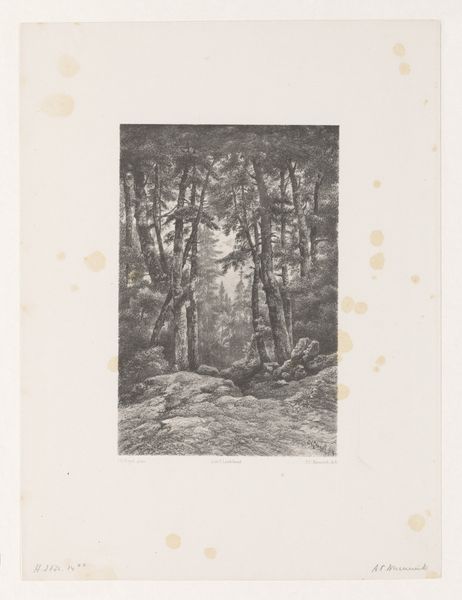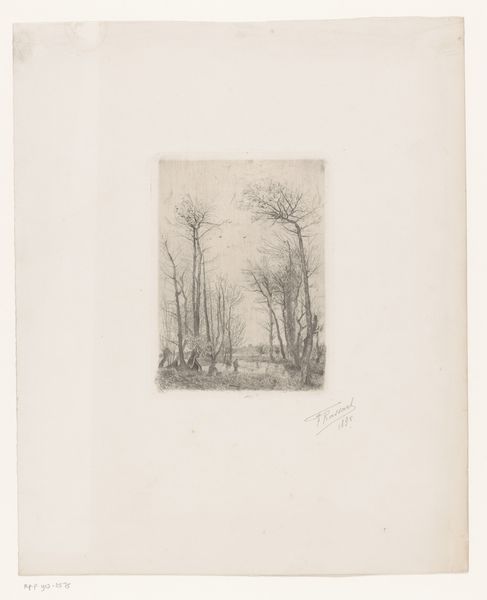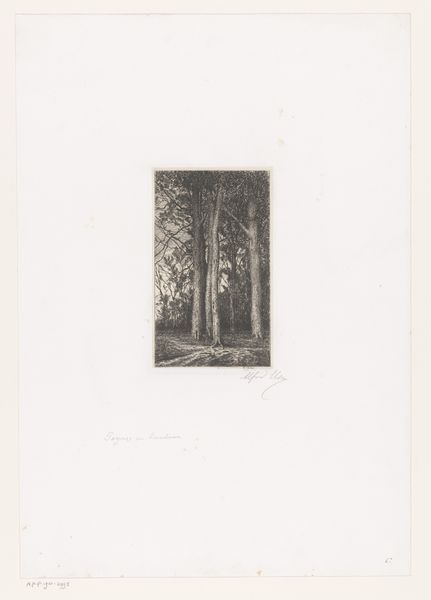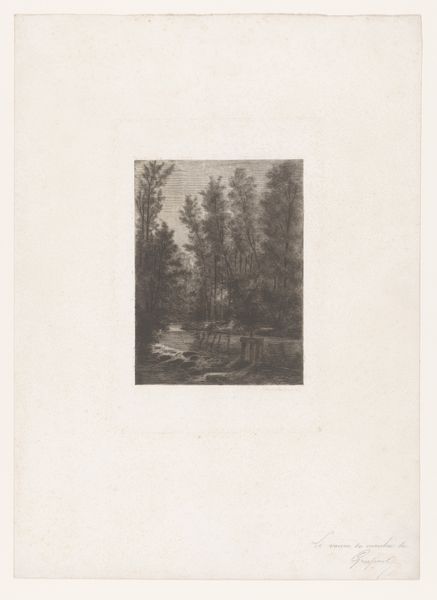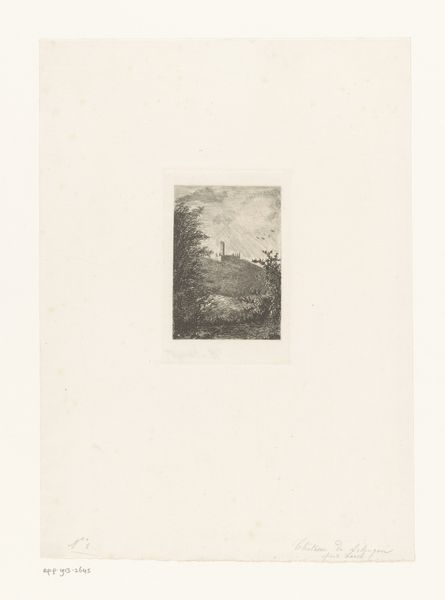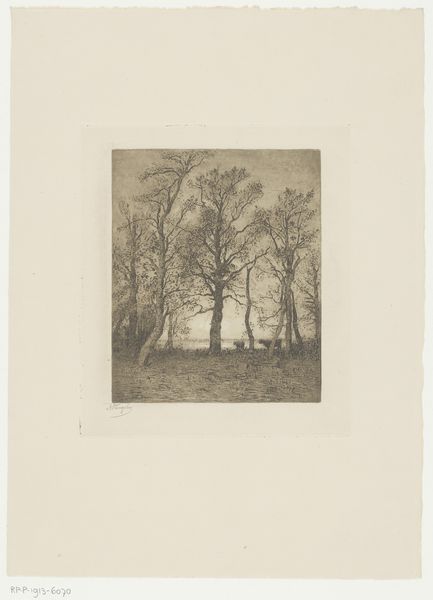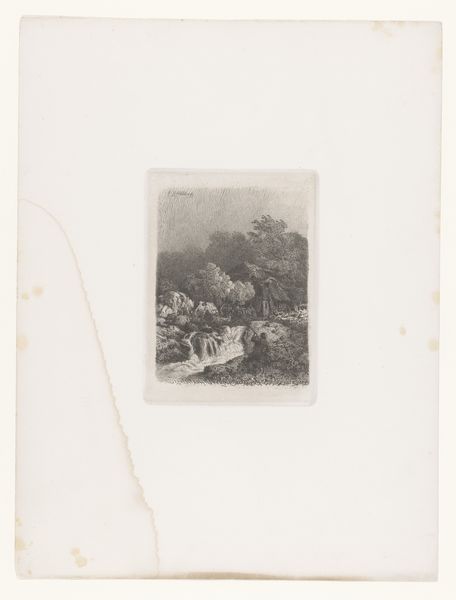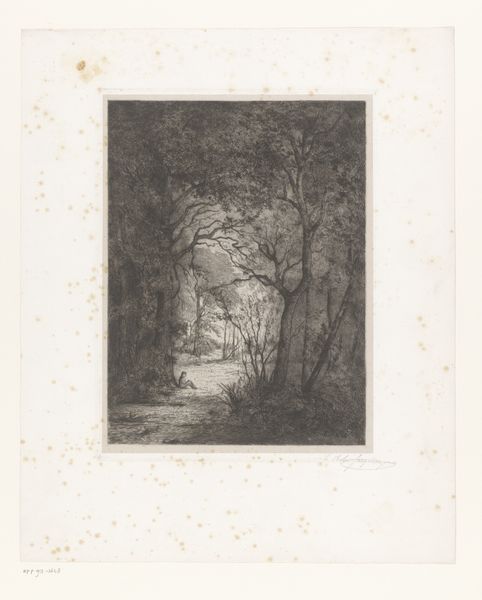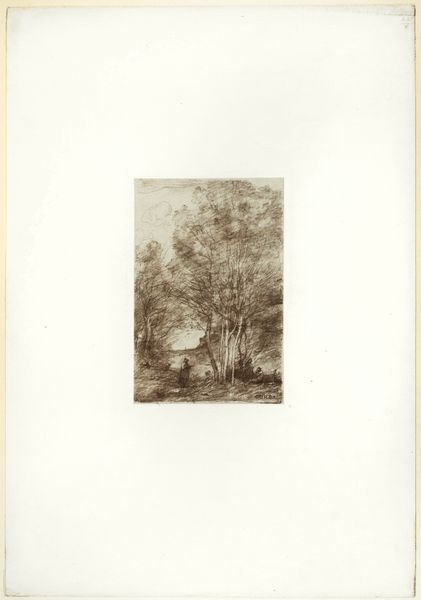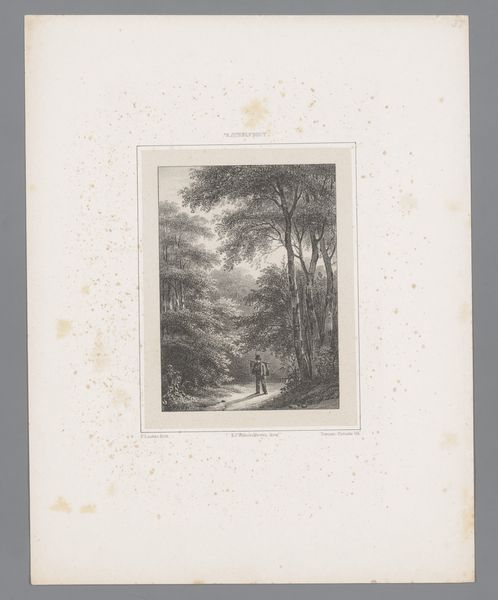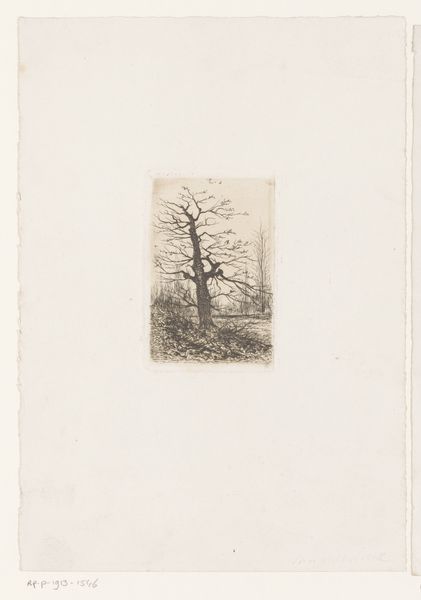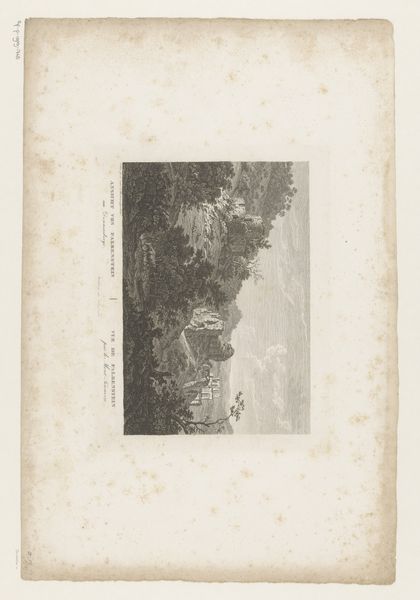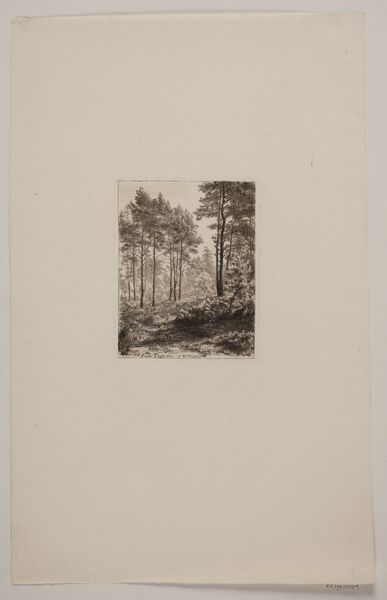
drawing, pencil
#
drawing
#
landscape
#
etching
#
forest
#
romanticism
#
pencil
Dimensions: height 475 mm, width 340 mm
Copyright: Rijks Museum: Open Domain
Curator: Welcome. Today we’re looking at Barend Cornelis Koekkoek's "Bosgezicht," a landscape drawing from 1844-1845. It resides here at the Rijksmuseum. Editor: Hmm, a forest...My first thought? Quiet. Eerily so. All I can hear are whispers on the wind in the branches, if that makes any sense. Curator: Absolutely. Koekkoek, rooted in the Romantic tradition, evokes a distinct mood through light and shadow, a common technique employed at the time to elicit emotion relating to nature, like serenity, but also its sublime, almost terrifying indifference to human endeavors. How does this strike you? Editor: Terrifying's a bit strong for me, but I feel the artist. There's this delicate balance. See how the light dapples through the leaves? It’s gentle, inviting...yet the forest itself feels impenetrable, doesn’t it? Like you could get wonderfully, hopelessly lost. Curator: The artist uses the landscape here as a space to examine Dutch national identity within the era’s political unrest. Through attention to realism, a kind of hyper-detail emerges to communicate stability and tradition through landscape. What impact do you see from a modern perspective? Editor: Oh, interesting! I feel the weight of history—you see it in those gnarled branches. But it also feels like an escape... which might speak to that need for stability during upheaval. I appreciate how much he communicates with just pencil on paper, right? The textures… you can practically smell the damp earth. It’s like a refuge. Curator: Precisely. Koekkoek masterfully captures the nuances of light and form with his technique in the drawing. We can read a sense of groundedness amid social change and idealized beauty. The detail certainly makes it feel timeless. Editor: Timeless...yeah, I can see that. Looking at it, I wonder how much of myself I project into the artwork and how much I truly get to understand the artist. This dialogue makes you question your place in history. Food for thought, really. Curator: Indeed. Reflecting on art requires us to not only contextualize, but to connect with the artist across generations. Editor: A beautiful quiet moment of connection amid the noisy world.
Comments
No comments
Be the first to comment and join the conversation on the ultimate creative platform.
